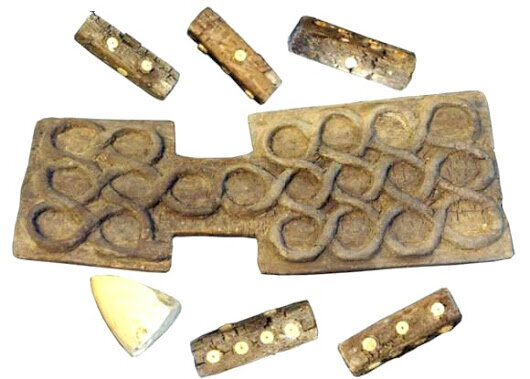Whispers of antiquity: Sistan-Baluchestan to unveil ancient tabletop games

TEHRAN – Some of the world’s oldest tabletop games are arranged to be showcased in Iran’s Sistan-Baluchestan province in part of programs to celebrate National Cultural Heritage Week and International Museum Day.
Speaking on Wednesday, the provincial tourism chief announced that during the Cultural Heritage Week [May 17 to 23], and in close collaboration with the National Museum of Iran, the province will unveil ancient pastimes like the renowned “Ancient Burnt City Game,” offering a captivating glimpse into millennia-old civilizations.
“During this week, more than 125 programs will be implemented in the province,” Tehrani-Moqaddam further elaborated. “One of the important points of this week is the unveiling of the oldest tabletop games of the ancient world.”
The board games, he continued, which have been transferred from the National Museum of Iran, will be available for public viewing until late June at the Great Museum of Zahedan.
The director-general further explained that these objects represent three tabletop games related to southeastern Iran, known as some of the oldest tabletop games in the world, including the “Ancient Burnt City Game” which is famous for its similarity to the game of snakes and ladders and is made of ebony wood with its unique pieces.
“The second game, called the ‘Jiroft Board Game,’ is made of stone and dates back to the Bronze Age,” he brought to light. “With about 5,000 years of history.”
Tehrani-Moqaddam also outlined that the third case is a part of the 'Sistan Pirzal Hill Tabletop Game,’ belonging to the Bronze Age and made of terracotta. Some of its pieces were discovered in archaeological excavations in 2021 and will be on public display during this week.
According to the event organizers, arranging a three-day coaching course for the Ancient Burnt City Game is also among the programs planned for the future league of this game.
This year, ‘Cultural Heritage, Public Participation and Social Responsibility’ is considered the main slogan and approach of the week, and various special programs have been planned throughout the week, Mohammad-Hadi Tehrani-Moqaddam added.
The director-general highlighted that the slogan “Museums for Education and Research” has been set by the International Council of Museums (ICOM)
“An exhibition of recent findings of the Burnt City will also be held at the Burnt City Museum in the course of Cultural Heritage Week,” Tehrani-Moqaddam winded up. “Where, for the first time, the Burnt City Marble Cup will be showcased.”
Also known as Shahr-e Sukhteh, or Shahr-i Sokhta, Burnt City is associated with four rounds of civilization, all burnt down by catastrophic sets of fire. The site is situated in the Sistan-Baluchestan province, which was once a junction of Bronze-Age trade routes crossing the Iranian plateau.
According to the UN cultural body, changes in water courses and climate change led to the eventual abandonment of the city in the early second millennium. The structures, burial grounds, and many significant artifacts unearthed there and their well-preserved state due to the dry desert climate make this site a rich source of information regarding the emergence of complex societies and contacts between them in the third millennium BC.
Burnt City, which was once situated at the junction of Bronze Age trade routes crossing the Iranian plateau, was populated during four main periods up to 1800 BC. Previous rounds of excavations showed that its residents had great skills in weaving, and creating fine arts such as decorative objects, stone carving, and pottery painting.
XF/AM
Leave a Comment